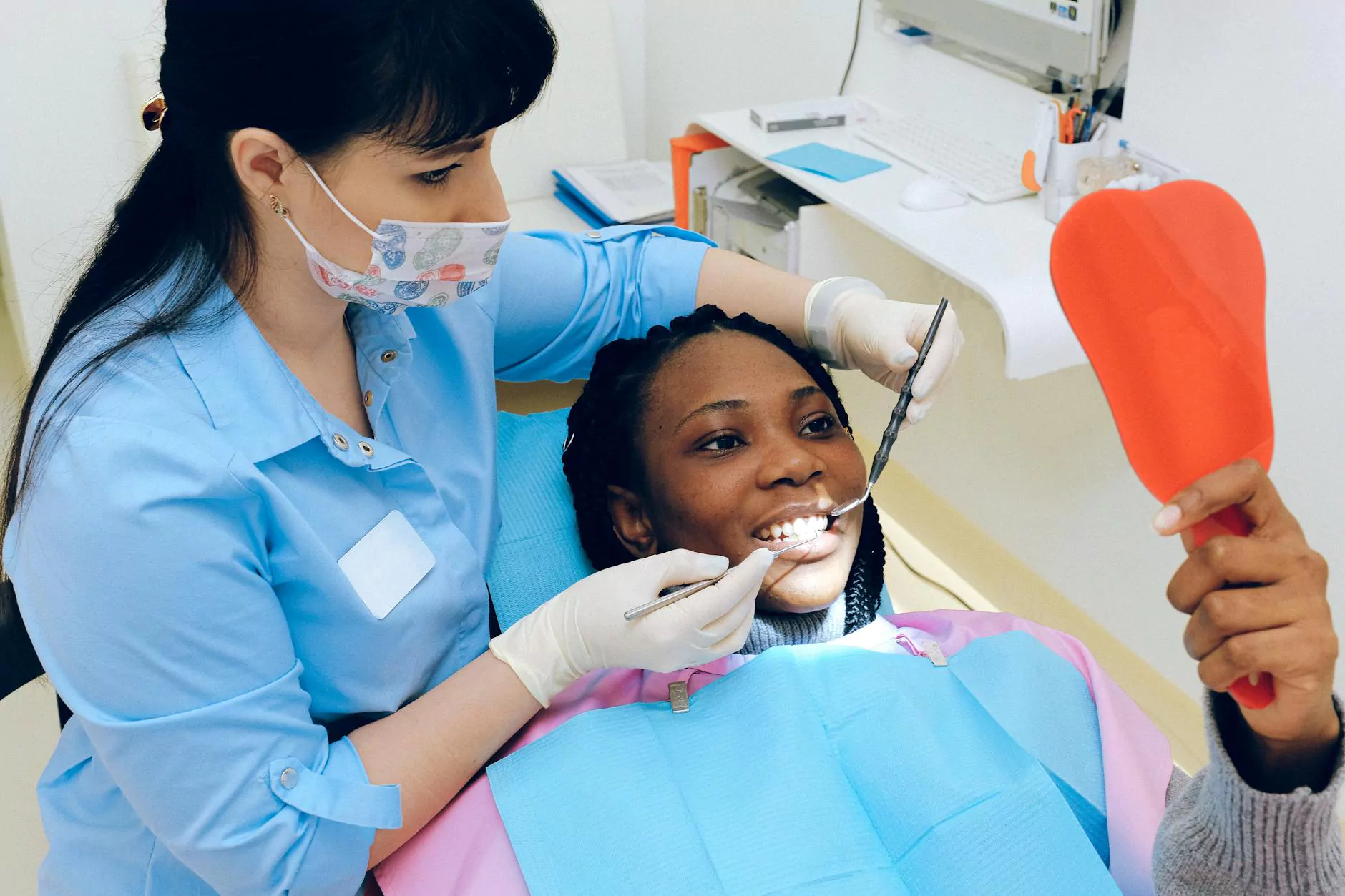Comprehensive Guide to Sinus Lifting: Boosting Dental Success & Oral Health

The field of dentistry has advanced remarkably over the past few decades, enabling practitioners to offer solutions that not only restore function but also improve aesthetics. Among these innovative procedures, sinus lifting stands out as a crucial technique, especially when preparing patients for dental implants in the upper jaw. This procedure plays a vital role in overcoming anatomical challenges, ensuring the success of implant placement, and promoting long-term oral health. In this extensive guide, we explore every facet of sinus lifting, discussing its significance, procedure, benefits, risks, and the importance of choosing a qualified dental specialist.
Understanding the Anatomy: Why Is Sinus Lifting Necessary?
The maxillary sinus is a hollow cavity located within the cheekbone, above the upper jaw's posterior teeth. When teeth are lost in this region, over time, the sinus membrane can expand downward, reducing the amount of available bone necessary to securely anchor dental implants. Insufficient bone volume in the posterior maxilla is a common obstacle, especially in edentulous patients (those who have lost multiple teeth).
In such cases, sinus lifting becomes essential to elevate the sinus membrane and add bone graft material, effectively increasing bone height and width. This process transforms insufficient or compromised bone into a suitable foundation for the stable placement of dental implants.
What is Sinus Lifting? A Detailed Explanation
Definition and Purpose of Sinus Lifting
Sinus lifting, also known as sinus augmentation, is a surgical procedure designed to increase the volume of bone in the upper jaw's posterior region. This is achieved by lifting the sinus membrane and placing a bone graft beneath it. The graft material stimulates new bone growth, providing a secure anchorage point for dental implants.
Types of Sinus Lifting Procedures
- The Standard Sinus Lift: Involves creating a small opening in the bone to elevate the sinus membrane and insert graft material.
- Transalveolar (Osteotome) Approach: Suitable for limited sinus elevation; uses a series of increasingly wider osteotomes to lift the sinus floor through the implant site.
- Lateral Window Approach: Involves creating an opening in the lateral wall of the sinus, providing direct access for significant sinus elevation and graft placement.
The Step-by-Step Process of Sinus Lifting
Pre-Surgical Assessment and Planning
The journey begins with a comprehensive assessment, including panoramic X-rays, Cone Beam Computed Tomography (CBCT) scans, and a thorough review of the patient’s medical history. This helps determine bone volume, sinus anatomy, and any potential contraindications.
Local Anesthesia and Patient Preparation
On the day of the procedure, the patient receives local anesthesia to ensure comfort, sometimes combined with sedation if necessary. This minimizes anxiety and pain during the surgery.
Creating an Access Point
For the lateral window technique, a small incision is made in the gum tissue to expose the lateral wall of the sinus. A window is then carefully created to access the sinus membrane beneath.
Elevation of the Sinus Membrane
The sinus membrane, a delicate lining, is gently separated from the sinus wall using specialized instruments. Care must be taken to prevent perforation, which could complicate healing.
Placement of Bone Graft Material
Bone grafts, whether autogenous (from the patient), allografts, xenografts, or synthetic substitutes, are inserted into the created space, effectively increasing the bone volume. Over time, this graft material integrates with existing bone through biological processes.
Closure and Healing Period
The surgical site is sutured, and the patient undergoes a healing period that typically lasts between 4 to 9 months, allowing the graft to mature and strengthen.
Benefits of Sinus Lifting
- Enables successful dental implant placement: Ideal for patients with insufficient bone height in the posterior maxilla.
- Improves oral functionality: Restores chewing ability, speech, and aesthetics.
- Preserves facial structure: Prevents bone resorption that can lead to facial collapse and aging signs.
- Minimally invasive options: Transalveolar approaches reduce recovery time and procedural discomfort in suitable cases.
- Long-term stability: Properly performed sinus lifts contribute to the longevity of dental implants.
Risks and Considerations in Sinus Lifting
While sinus lifting is generally safe and predictable, there are potential risks, including:
- Sinus membrane perforation: The most common complication, which may lead to sinus infection or graft failure.
- Infection or sinusitis: Postoperative infection causing discomfort and delays in healing.
- Graft rejection or resorption: Inadequate integration can compromise implant stability.
- Damage to adjacent structures: Such as nerves or blood vessels, which is rare but requires experienced clinicians.
Choosing a skilled and experienced dental surgeon or periodontist minimizes these risks and ensures optimal results.
Why Choose Specialized Dental Care for Sinus Lifting?
For procedures as intricate as sinus lifting, expertise is crucial. A qualified dentist or specialist will perform detailed planning, leverage advanced imaging technology, and utilize precise surgical techniques. Chiswick Park Dental, with its team of experienced dentists within the Health & Medical and General Dentistry categories, offers unparalleled care in sinus lift procedures tailored to your specific needs.
The Postoperative Phase: Caring for Your Sinus and Dental Implants
Effective postoperative care is vital for successful healing. This includes:
- Maintaining excellent oral hygiene to prevent infection
- Avoiding blowing the nose or strenuous activities to prevent sinus pressure
- Taking prescribed antibiotics or anti-inflammatory medications as directed
- Attending follow-up appointments for assessment and removal of sutures
Most patients resume normal activities within a few days, with complete healing taking several months before implant placement is finalized.
How Sinus Lifting Enhances Your Smile and Confidence
Beyond functional benefits, sinus lifting contributes significantly to aesthetic outcomes. Restoring missing teeth in the upper jaw not only supports facial structure but also restores your natural smile, boosting confidence and self-esteem. Modern dental technology and skilled surgeons ensure that the surgical results are harmonious with your facial features, resulting in a natural and youthful appearance.
Exploring Your Options: Is Sinus Lifting Right for You?
If you're missing upper back teeth or have experienced significant bone resorption in the maxilla, sinus lifting might be the best solution to help you regain oral function and aesthetics. A comprehensive consultation with a trusted dental specialist will evaluate your specific circumstances and determine whether sinus lifting combined with dental implants is suitable.
Conclusion: Embrace the Future of Dental Reconstruction with Sinus Lifting
Achieving a healthy, functional, and beautiful smile is within reach thanks to advanced techniques like sinus lifting. When performed by experienced professionals, this procedure can transform your dental health, enabling the placement of durable implants and restoring confidence. If you are considering dental restoration options, consult with experts at Chiswick Park Dental to explore personalized solutions tailored to your needs.
Investing in your oral health through procedures like sinus lifting not only enhances your smile but also improves your overall well-being. Don't let anatomical limitations hold you back—modern dentistry provides effective strategies to help you smile confidently again.
Get in Touch Today
For a detailed consultation about sinus lifting or any of our dental services, contact Chiswick Park Dental. Our team of highly qualified dentists and specialists are committed to delivering safe, effective, and comfortable treatments that elevate your quality of life and oral health.









